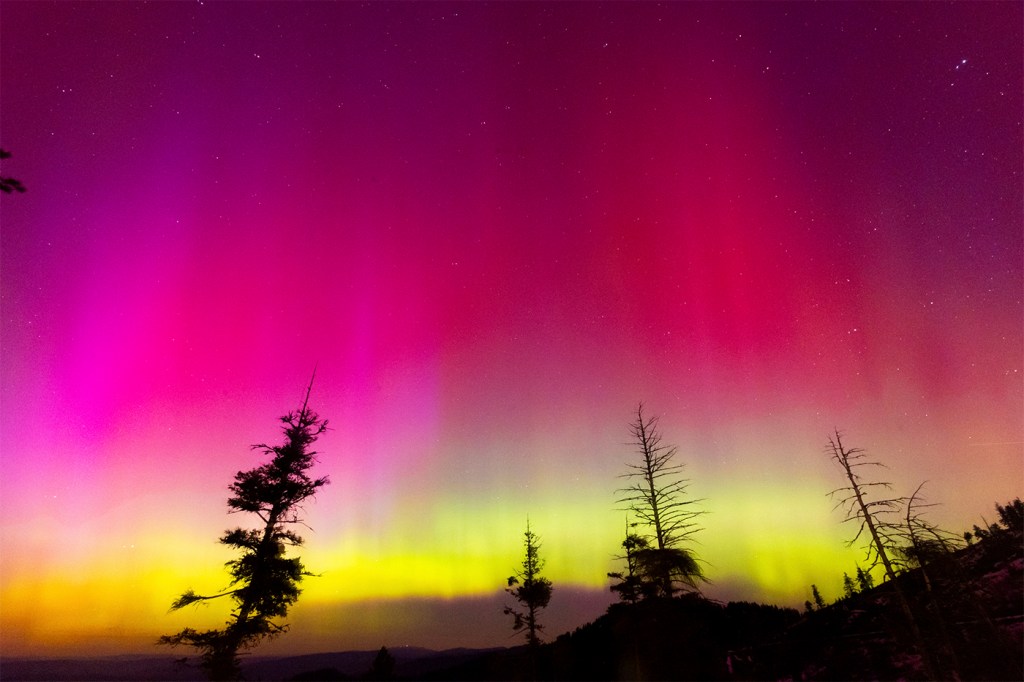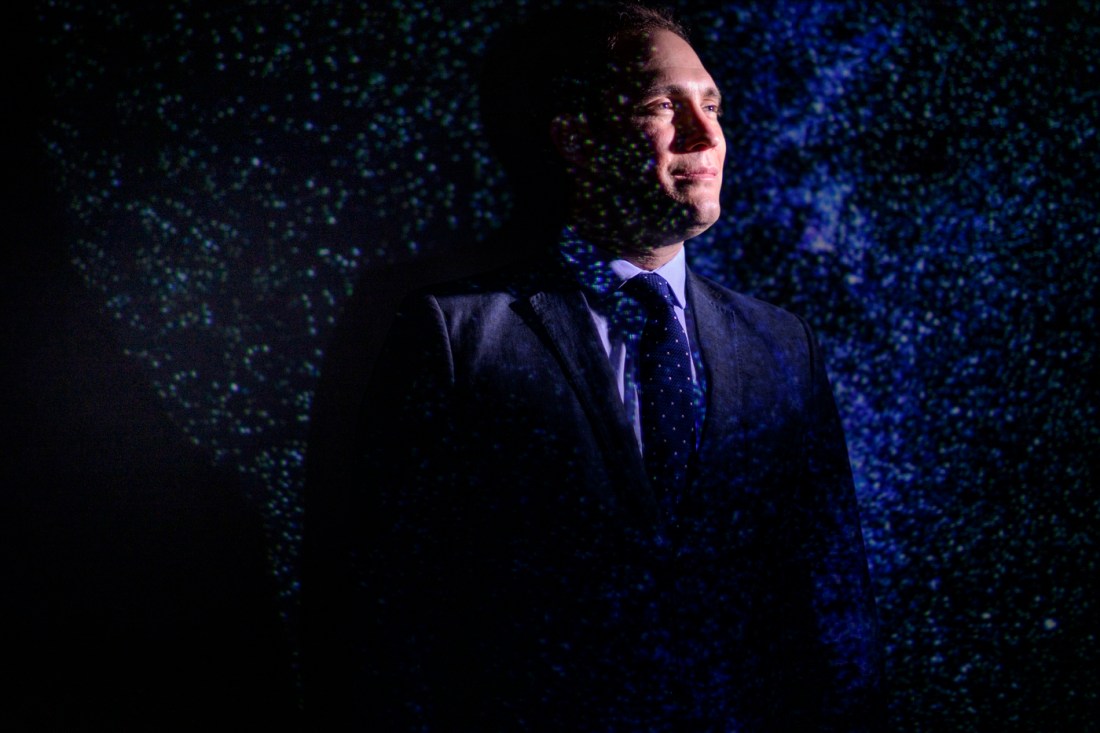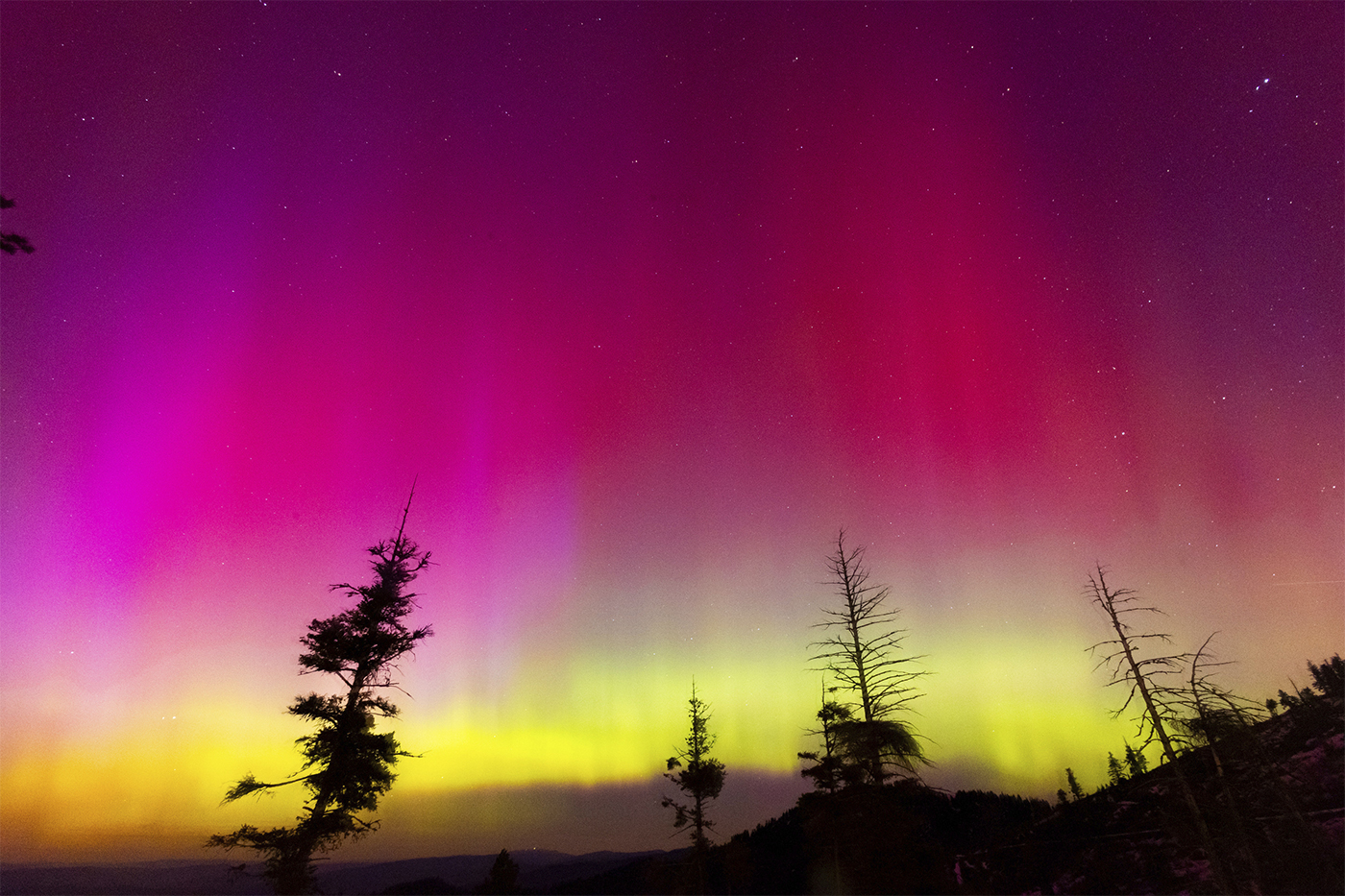The solar storm could impact satellite systems, but also increases chances of seeing the northern lights.

Warnings about Hurricane Milton hitting Florida have dominated news reports this week. But there have been warnings from forecasters with the U.S. National Oceanic and Atmospheric Administration’s Space Weather Prediction Center about another storm brewing: a severe geomagnetic storm.
What is a geomagnetic storm?
According to Jonathan Blazek, an assistant professor of physics at Northeastern University, these events are triggered by a coronal mass ejection, which is when the sun lets off a mass ejection of particles. Sometimes, these particles hit Earth and interact with our magnetic field and upper layers of the atmosphere. This, Blazek says, is a geomagnetic storm.
Blazek, who specializes in astrophysics and cosmology, says these storms are fairly short and can be predicted using satellites that can pick up the burst happening on the sun and track the trajectory of the light particles, which are predicted to spread out across the Northern Hemisphere.

The Space Weather Prediction Center issued a “strong geomagnetic storm warning” and said conditions from this event might affect power grids and satellite operation and GPS systems in the northern part of the United States.
This, Blazek says, is due to the impact these storms have in our magnetic fields. Strong enough storms can damage or knock out satellites or produce a strong current within wires that cause them to blow out or even start a fire from heat. But Blazek says many of these systems are built to withstand impacts from geomagnetic storms.
“I would not be too concerned about power loss,” he adds. “My guess is the worst you’re going to see is some sort of flickering or temporary voltage change. It would have to be a very rare event to actually take out a satellite, but what can happen is that the transmission of signals gets distorted in ways that are not expected and with something like GPS, this is a very precise measurement and so your GPS might be wrong or not work a little while.
“If you’re getting TV from a satellite, your signal might be distorted temporarily. People who communicate using ground-based transmissions will often notice things. … It is possible that transmission lines with really large, long cables can be more impacted, but modern power systems are built to be pretty robust to this,” he says.
There are some benefits to geometric storms as well. Blazek says there’s a higher chance for people to see the northern lights Thursday night due to the energy particles hitting the Earth and bending its magnetic fields.
“Normally what happens is the stream of particles coming from the sun gets bent by our magnetic field towards the poles, hits the atmosphere, and releases a lot of energy,” Blazek says. “That’s the aurora borealis. But if you send enough particles, you can overload the magnetic field and bend it in such a way that these particles can go much further away from the poles. So you’d be able to see the aurora in places where you’re not normally able to see it.”
People on the East Coast of the United States were also able to see the northern lights earlier this year, a somewhat unusual occurrence. Blazek said we’ve seen more of them this year due to the cycle of the sun’s magnetic field.
“The sun has an 11-year cycle where its magnetic field basically gets stronger and weaker,” he said. “During the maximum period, you get a lot more activity. We’re near the solar maximum (now).”
Blazek recommends anyone hoping to get a glimpse of the lights during the storm travel north once it’s dark out and look toward the horizon to maximize their chance of seeing them.

